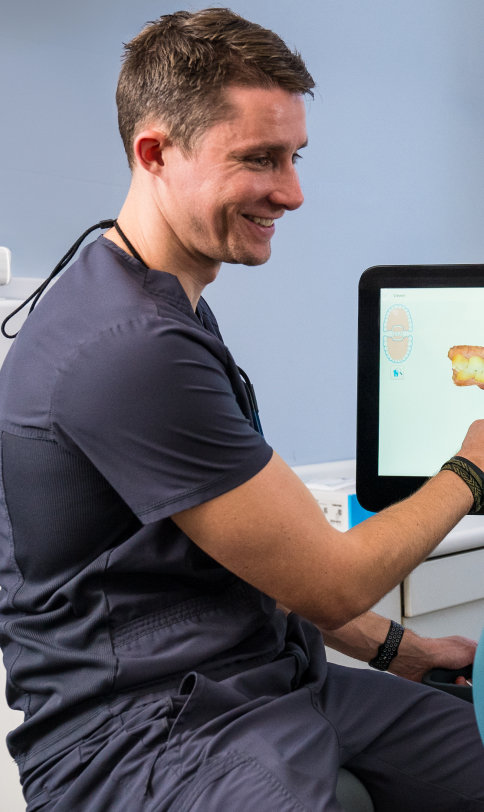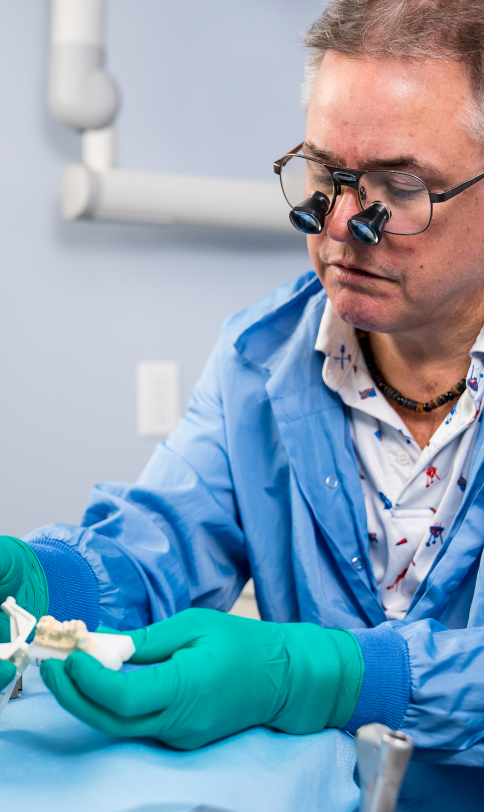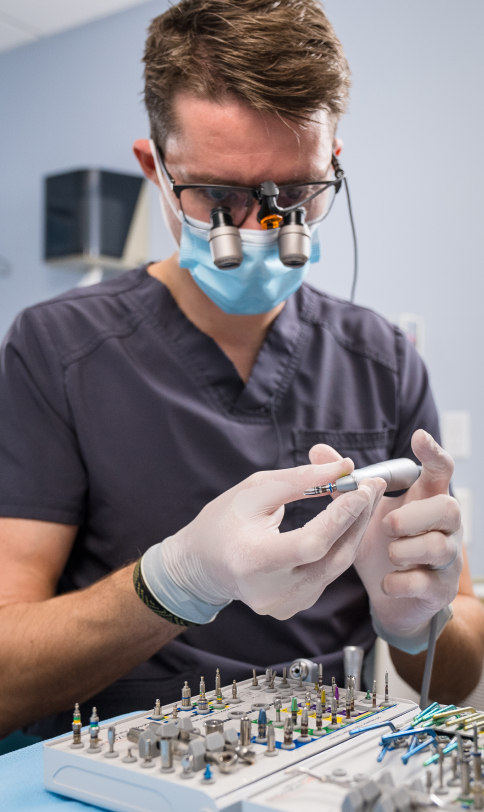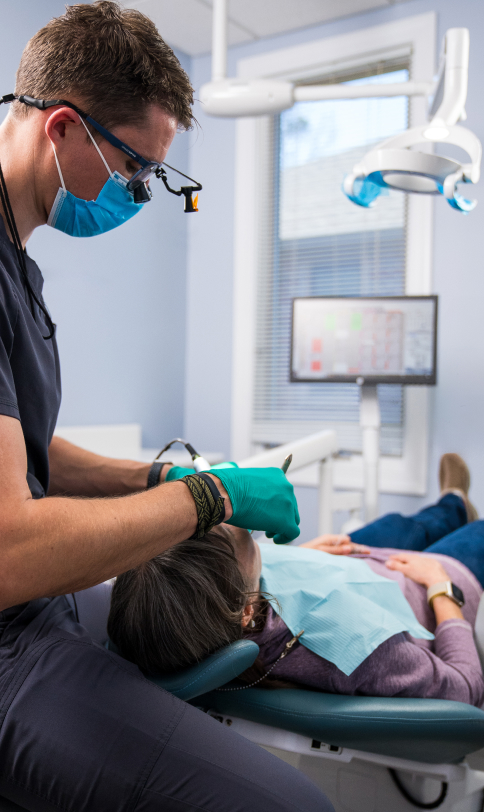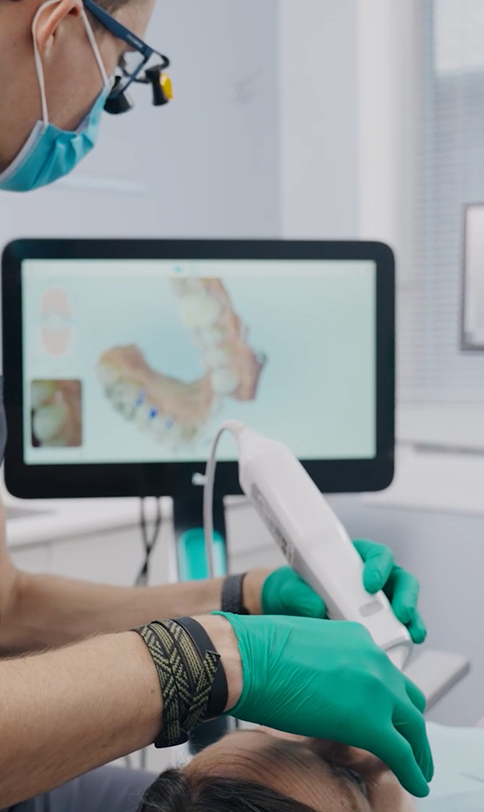
Bone Graft for Dental Implants: What to Expect
A bone graft, or bone augmentation, is crucial for ensuring a strong and secure foundation for dental implants before their placement. This procedure rebuilds jawbone density, which commonly diminishes following tooth loss, thus providing a stable base for the artificial tooth.
Although undergoing a bone graft may not be the most pleasant experience, it significantly improves the long-term success of the dental implant procedure.
Our team offers bone grafts for dental implants when necessary, providing comprehensive assistance and treatment throughout the entire implant process. Don't endure the insecurity of missing teeth—let us help restore both the appearance and function of your smile.
Bone Grafting for Dental Implants
According to the Centers for Disease Control and Prevention (CDC), nearly 1 in 5 adults aged 65 or older has lost all their teeth. Restoring lost bone in the jaw through bone graft treatment after tooth loss is crucial. This procedure helps ensure proper long-term support for future implants and artificial teeth.
A bone graft rebuilds lost bone inside the jaw and is recommended for patients experiencing bone density loss due to tooth loss. Good candidates for a bone graft include those planning to undergo implants for missing teeth, individuals with tooth loss or gum disease, and those with bone loss.
The natural teeth and gums support each other, with teeth stimulating the jawbone. However, when tooth loss occurs, the supporting bone loses its primary function, leading to resorption. This process involves the body absorbing calcium from the jawbone, resulting in diminished bone density. This lack of calcium makes it challenging to support implants, as there is less bone available for bonding with the titanium implant and ensuring a secure hold.
The purpose of a bone graft procedure is to rebuild lost bone density following tooth loss, providing a solid foundation for future dental implants.
" Restoring lost bone in the jaw through bone graft treatment after tooth loss is imperative. "
When Bone Grafting Is Necessary
Signs That Indicate a Bone Graft Is Necessary
" In cases where the bone is soft, a minor bone graft may be necessary to bolster the bone and offer enhanced support for the implant. "
How Bone Grafting Works
There are various bone grafts, including autograft, allograft, xenograft, and alloplastic grafts. While most procedures utilize real bone, synthetic bone material is employed in alloplastic grafts. The specific steps involved vary depending on the type of bone grafting procedure. Generally, it entails the placement of either natural bone or synthetic material into the jawbone above the missing tooth through a minor surgical intervention. Subsequently, the bone undergoes a healing process, integrating with the existing bone in the area, typically spanning two to three months.
Bone grafting is a relatively common procedure. According to a 2016 study, nearly half of 800 individuals with dental implants required a bone graft before implantation. This procedure offers significant benefits to patients by providing additional support for dental implants, thereby reducing the risk of implant failure. Furthermore, bone augmentation can enhance the patient's appearance, function, and oral health.
" Usually, the procedure entails placing either natural bone or synthetic bone material into the jawbone above the missing tooth through a minor surgical procedure. "
What to Expect After the Procedure
While patients conditions, oral health, and recovery processes vary, there are several strategies to facilitate faster jaw healing after bone grafting. Following the procedure, patients may experience swelling, bruising, and minor gum bleeding. To expedite recovery, it's advisable to consume soft foods and avoid dark or sugary beverages. Additionally, maintaining good oral hygiene through gentle brushing, flossing, and mouthwash use is essential.
We recommend seeking a qualified oral surgeon or implant specialist for bone graft procedures, as they possess the expertise needed for optimal outcomes. Patients should actively participate in their oral health care and understand their treatments and providers. It's prudent to inquire about a dentist's experience with bone grafting and the success rates of their treatments. Before scheduling a consultation, reviewing online testimonials and patient reviews, including before-and-after photos, can provide valuable insights.
" For faster recovery, it's best to consume soft foods and refrain from dark beverages or sugary drinks. "
Alternative Options
While bone grafting may be the primary option for single-tooth implants, alternative solutions exist for those considering full-arch or full-mouth dental implants. These alternatives include complete arch prostheses and zygomatic prostheses.
Complete arch prostheses are anchored to the jaw using 4 to 6 implants, ensuring sufficient stability. However, successful placement requires the patient to have 4 to 6 areas of adequate bone density.
On the other hand, zygomatic prostheses involve the insertion of long implants into the zygoma (cheekbone) rather than the jawbone. As these implants aren't connected to the jaw, a bone graft isn't necessary, even for patients with low bone density. A review of 2,402 zygomatic implants demonstrated an impressive success rate of 96.7% over 12 years, making them a reliable and effective option in oral surgery.


